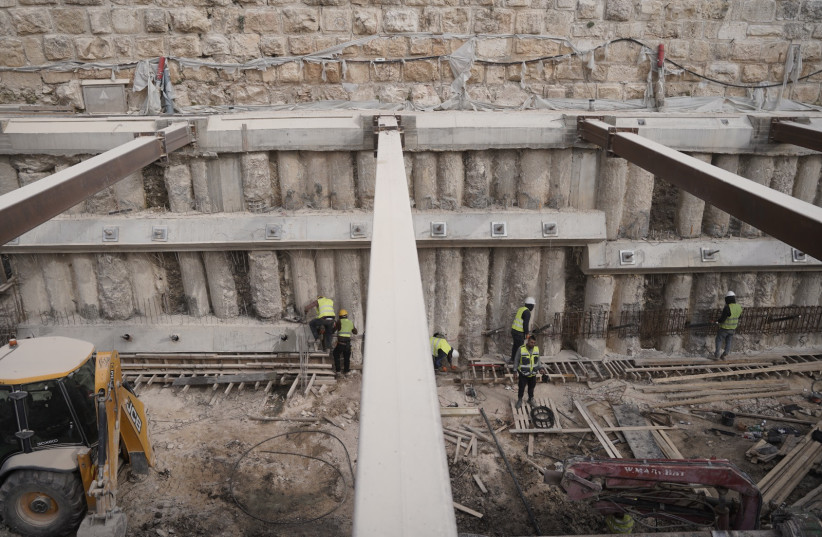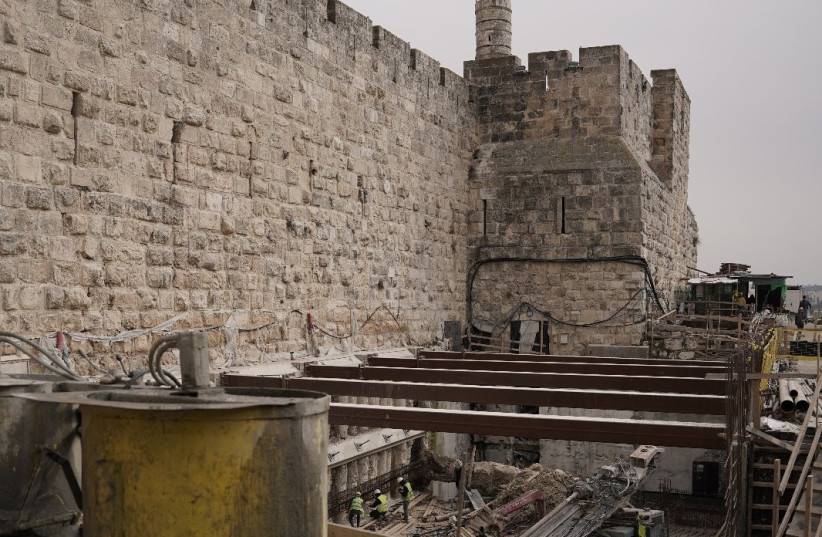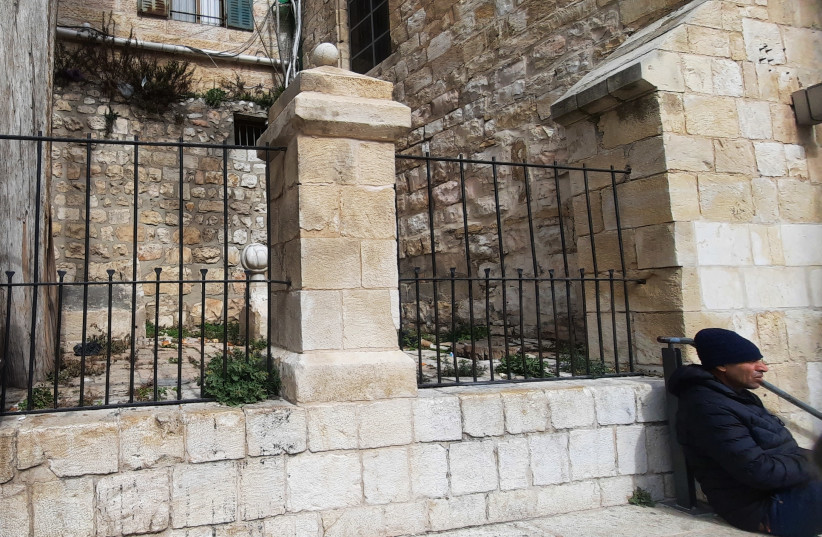Thank goodness for good engineers.
Especially those from the Middle Ages who built at least one section of the walls of David’s Citadel in Jerusalem’s Old City.
Apparently at least a 20-meter-long section of the huge monumental wall, which has become a well-known Jerusalem landmark, was not built on any foundation but on constructive fill – which in layman’s terms could loosely be described as a pile of construction dirt.
“What we thought we would find and what we found were two different things,” noted Eilat Lieber, director and chief curator of the museum. “We thought we would possibly find the continuation of the Hasmonean wall (as the foundation), but we found nothing.”
The surprising discovery was made last year during work being undertaken in the Western terrace area for the Tower of David Museum’s multi-phase renewal project. A new visitor’s center is planned there, snuggled in the area between the outer Old City Ottoman-period walls and the inner citadel wall which was once an Ottoman ramp, and used in modern times as a parking lot. The ramp was also built on top of construction fill.

“In this eastern section we excavated around this huge monumental wall, and we discovered that it was built without any foundation,” marveled Israel Antiquities Authority archaeologist Noam Silverberg, gazing at the exposed ancient wall now supported by a series of 17-meter deep “piles” – wrought iron tube-like metal constructions.
“Apparently the engineers knew what they were doing.”
Silverberg noted that some scholars have thought this was an Ottoman-era wall, but an Arabic inscription on the dedication-stone used for part of the construction of the wall invokes the name of Ayyubid ruler Sharaf ad-Din al-Mu’azzam Isa, the nephew of Saladin, and the year 1212 AD.
“This makes the wall older than we thought, dating back to at least the 13th century,” he said.
While it is not unheard of to find ancient walls built without foundations, Silverberg said, it was not the common form of construction. “There is construction like this in other places, but it is surprising to find,” he said.
Yaacov Schaffer, chief conservation engineer for the Tower of David building project from Schaffer and Ronen Engineering and Conservation – who formerly worked many years with the IAA – said ancient structures were normally built on top of one of three types of foundations: bedrock, an older wall, or a specially constructed foundation platform.
“In 40 years of work I have never seen a wall – not from the Hellenistic time, not from the Roman period, not from early Arab period, not from any period – that goes down to the earth without any foundation,” said Schaffer, whose firm is completing the new engineering work on the wall.
But engineeringly speaking, he said, what has maintained the wall standing all these centuries is “a wonder of engineering,” where his ancient colleagues correctly calculated the amount of earth they needed to pack around both sides of the base of the wall to provide the pressure to keep it stable.
“The vertical pressure on the wall is not a lot of kilograms per square centimeter, but underneath at the bottom of the wall for about a meter there was dirt behind and on both sides, which equilibrated the wall so there was no horizontal stress,” he said. “This is worth a doctorate, or at least a research paper.”
The topography had already been changed when the Ottomans built a ramp for when they thought they would need to bring in the latest 16th-century weapon – the canon – to defend the city again Napoleon’s forces, which never actually made it to Jerusalem.
When the recent excavation work began, the balance that had been created by the original engineers was lost, said Schaffer, and the system of 80 “piles” were built along the wall to provide support, which instead of cement were filled with bentonite, an absorbent swelling clay.
It was, noted Lieber, a very exciting archaeological challenge.

They also faced another challenge during the time the wall was being given its supportive element: that it not move, almost not at all. After consulting with experts in Portugal and Italy, special digitalized sensors connected to a mobile phone app were placed along the wall to monitor for movement. In addition to the engineers, Lieber also had the sensor app connected to her mobile phone.
Once, said Schaffer, some movement was detected by the sensors and everyone got very nervous. However in the end, it turned out that a construction tractor had moved one of the sensors causing it to go off.
Work on the foundations and the strengthening of the walls of the citadel as well as the Old City walls will be completed in about two weeks, as will the construction of the foundations for the new museum building.
“I want to be able to sleep at night again,” said Leiber.


Reminded of the old legend about two Ottoman-era tombs just inside Jaffa Gate that are said to be those of Suleiman the Great’s engineers, who built the outer wall and were killed by the Ottoman ruler either because they did such a terrible job or because they did such a good job he didn’t want anyone else to employ them, Schaffer said he is ready to take full responsibility for his firm’s work.
